PDF chapter test TRY NOW
These are the first land plants with vascular tissues (xylem and phloem). These vascular plants do not produce flowers or seeds, and hence, known as vascular cryptogams. These plants are the dominant and most conspicuous group of land plants, representing more than 90% of the earth's vegetation.
The main plant body of these plants is well-differentiated into true roots, stems and leaves.
The main plant body of these plants is well-differentiated into true roots, stems and leaves.
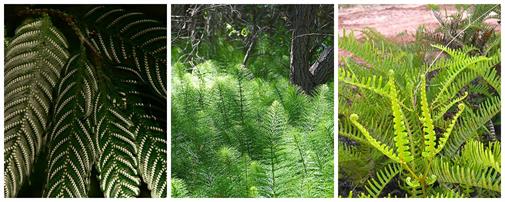
Some of the Pteridophytes
Life cycle and reproduction of pteridophytes:
Similar to the bryophytes, the pteridophytes also exhibit alternation of generation. During their life cycle, the diploid sporophytic phase alternates with the haploid gametophytic phase.
Unlike the bryophytes, in pteridophytes, the sporophyte is the dominant phase. The sporophytes reproduce through the spores that are produced in the sporangium. The sporangia that bears leaves are known as sporophyll.
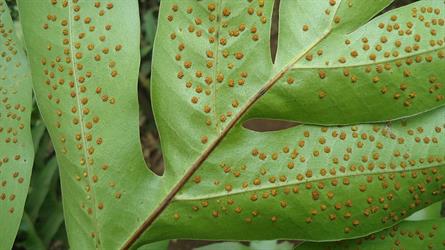
Sporangia
The majority of the plants are classified as homosporous as they produce only one type of spore, i.e., either microspore or megaspore. However, in some plants, both the spores are produced. These type of plants are known as heterosporous.
The spores that are produced by the sporophyte give rise to the gametophytic generation known as the prothallus.
The prothallus is independent and short-lived. The gametophytes are the structures that produce multicellular sex organs such as antheridium and archegonium.
The antheridium produces antherozoid (male gamete) and archegonium, which contains an egg (female gamete). The male gamete fertilizes the egg resulting in the formation of a diploid zygote. This zygote develops into an embryo that differentiates into sporophyte.
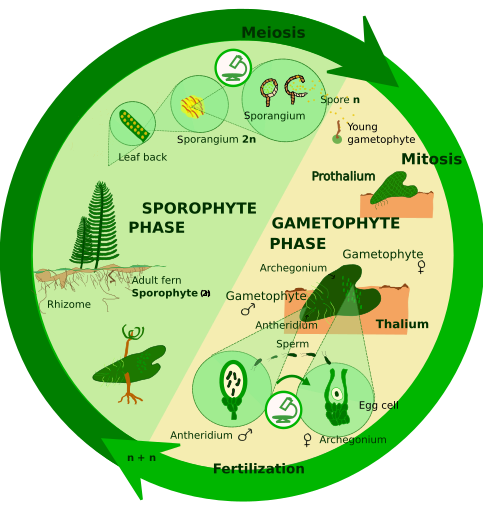
Life cycle of pteridophytes
Classification of pteridophytes:
Pteridophytes are classified into four classes as follows:
- Psilopsida
- Lycopsida
- Sphenopsida
- Pteropsida
1. Psilopsida:
These are the most primitive pteridophytes. They contain rhizoids with no leaves. The sporophyte of these plants is homosporous.
Example:
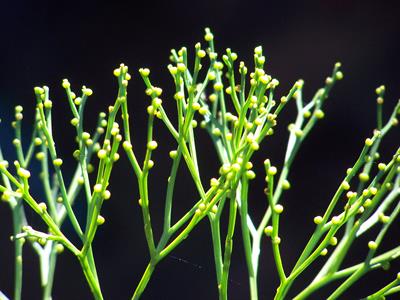
Psilotum
2. Lycopsida:
These plants are commonly known as club moss. They have a well-differentiated plant body with adventitious root, stem, rhizophores and leaves. Their sporophyte is either homosporous or heterosporous.
Example:

Selaginella and Lycopodium
3. Sphenopsida:
They are commonly known as horsetails. These plants have a well-differentiated plant body with roots arising from nodes of the underground rhizome, stem and scaly leaves. They are homosporous.
Example:
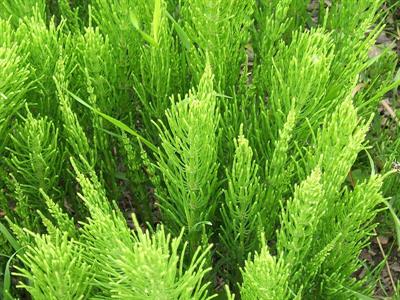
Equisetum
4. Pteropsida:
They are commonly known as ferns. They have a well-differentiated plant body which has roots, stem and leaves. Their sporophyte is both homosporous and heterosporous.
Example:
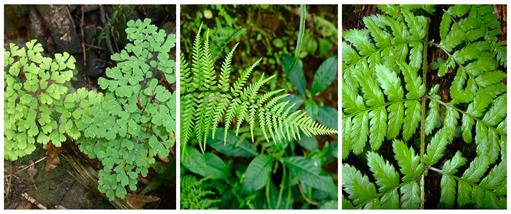
Adiantum, Pteris, Dryopteris
Reference:
https://commons.wikimedia.org/wiki/File:Pteridophyta_in_yard.jpg
https://commons.wikimedia.org/wiki/File:Plant_Fern_P1120347_07.jpg
https://commons.wikimedia.org/wiki/File:Figure_25_00_01.jpg
https://commons.wikimedia.org/wiki/File:Drynaria_quercifolia_(Oakleaf_fern)_sporangia_2.jpg
https://commons.wikimedia.org/wiki/File:Diplohaplontic_English.svg
https://www.flickr.com/photos/dracophyllum/3605685997
https://commons.wikimedia.org/wiki/File:Selaginella_canaliculata.jpeg
https://pixabay.com/photos/lycopodium-annotinum-lycopodium-1008522/
https://commons.wikimedia.org/wiki/File:Plant_Fern_P1120347_07.jpg
https://commons.wikimedia.org/wiki/File:Figure_25_00_01.jpg
https://commons.wikimedia.org/wiki/File:Drynaria_quercifolia_(Oakleaf_fern)_sporangia_2.jpg
https://commons.wikimedia.org/wiki/File:Diplohaplontic_English.svg
https://www.flickr.com/photos/dracophyllum/3605685997
https://commons.wikimedia.org/wiki/File:Selaginella_canaliculata.jpeg
https://pixabay.com/photos/lycopodium-annotinum-lycopodium-1008522/
https://commons.wikimedia.org/wiki/File:Equisetum_arvense_foliage.jpg
https://commons.wikimedia.org/wiki/File:Adiantum_poiretii,_twee_fronde,_Krantzkloof_Natuurreservaat.jpg
https://commons.wikimedia.org/wiki/File:Adiantum_poiretii,_twee_fronde,_Krantzkloof_Natuurreservaat.jpg
https://commons.wikimedia.org/wiki/File:Pteris_sp_2878.jpg
https://commons.wikimedia.org/wiki/File:Dryopteris_remota_leaf_detail.jpg
